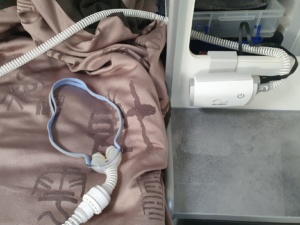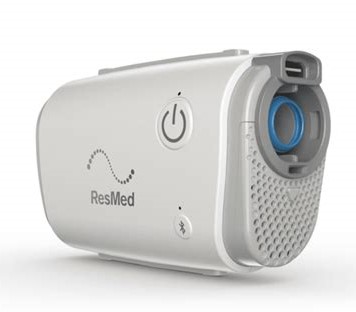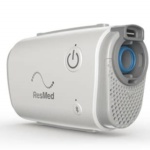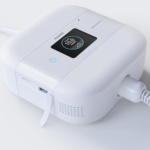
So,,, in 2014 I was diagnosed with severe sleep apnoea. It wasn’t unexpected because my snoring was deep, I was struggling to stay awake while driving and constantly nodding off at work for short periods.
The diagnosis wasn’t what I wanted to hear but sleep tests confirmed it beyond doubt so the best course of action was to accept it and start using CPAP therapy; something I will have to do for the rest of my life. With that said, in hindsight, it’s not the worst thing in the world and does not really impact that much other than having to wear a mask whilst sleeping at night.
When I first started with CPAP I bought a ResMed S9 machine that sits on my bedside table and is a bit bigger than a box of Weet Bix. To get the full benefit of CPAP therapy you need to use the machine at least five nights a week for at least five hours. This isn’t too difficult to achieve, when you’re at home, but travelling is a different matter. Although the ResMed S9 packs into a travel bag it is bulky. So much so that I elected not to take it with me on our two month Alaska, Canada & U.S. trip. I did not want to be lugging something that size around with me in addition to every thing else. I made it through the trip fine but resolved that I would need to work something out in the future when travelling around Australia in a caravan.
After we got our caravan I took the Resmed S9 on a weekend trip. It worked fine but:
- it took up a lot of space in my cupboard; and
- only runs on 240V so can only work on a powered site.
We intend doing a bit of free camping as we travel around Australia so it would be desirable to have a CPAP machine that is both compact and can run on 240V and 12V DC (without drawing a huge amount of current).
So a few years ago ResMed, Philips and few other manufacturers starting releasing their compact travel CPAP machines. Since Medibank provides a rebate every five years for CPAP machines I decided it was time I to look into getting a travel CPAP machine.
I narrowed the selection down to ResMed and Philips. The two respective machines were the:
Both these machines were significantly smaller than my Resmed S9 and each had its good and bad features as summarised below:
| Device | ResMed Air Mini | Philips Dreamstation Go |
|---|---|---|
| Pros | 240 V and 12 V DC. Smallest Size. | 240 V and 12 V DC1. Can use water humidifier2. Technically better design. Can use non-Philips tubes. |
| Cons | Only uses ResMed tubes. Does not use water humidifier3. | Does not have a 12 V plug. Size increases with battery and water humidifier. |
2. Additional component doubles the size of the unit.
3. Uses HumidX tablets, which cost extra ongoing.
After weighing up all the various attributes of each machine I ended up buying the ResMed Air Mini. Although I considered the Philips Dreamstation Go a better machine, the deal breaker was that it couldn’t operate on 12V DC without the added bulk of an external battery; and if I wanted a humidifier then that increased the size again. Ultimately the Philips machine, with battery and humidifier, would be almost three times the size of the ResMed machine, which I could directly plug into a socket in the caravan.
The biggest drawback of the ResMed Air Mini is the lack of a humidifier and the use of costly HumidX tablets ($10/month). In the end I don’t bother using the HumidX tablets and have had no problems with mouth/throat dryness while sleeping.
I took the ResMed Air Mini on our Shake Down Trip and it performed perfectly in all conditions under both AC and DC operation. I slept well and comfortably every night. The machine is whisper quiet however it does have a slightly annoying hum/whistle when you first start breathing through the nose piece.



